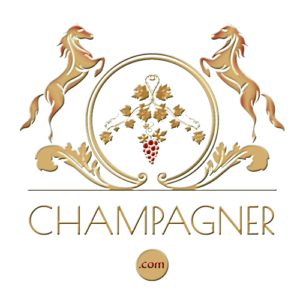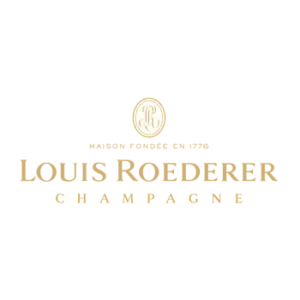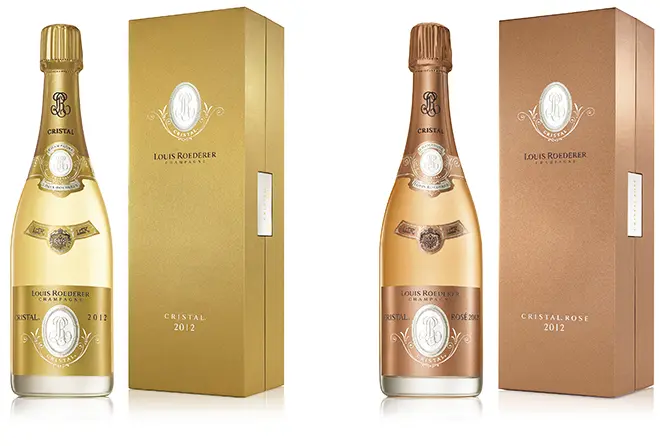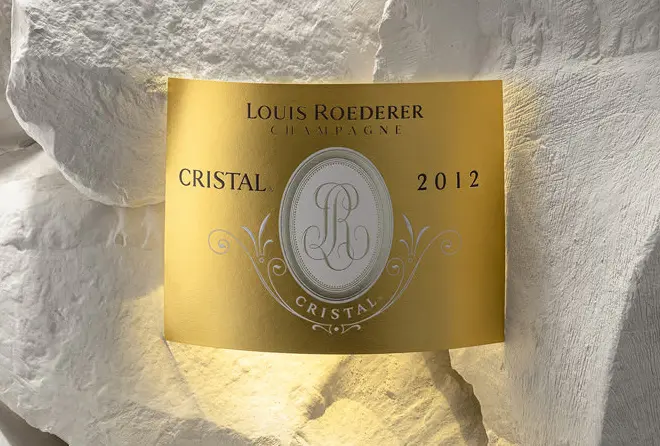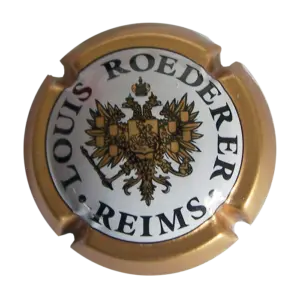Louis Roederer Champagne
Louis Roederer Champagne: A jewel of Champagne
Louis Roederer Champagnea renowned name in the world of champagne, was founded in 1776 in Reims and has since become a symbol of quality and luxury. The history of the House of Roederer is deeply rooted in the tradition and heritage of the Champagne rooted in the past. The house is still privately owned today and remains independent, which allows it to pursue its values and visions unchanged.
History
The beginnings of the House of Louis Roederer date back to the late 18th century. Although the official year of foundation is 1776, author and historian Tom Stevenson points out that the origins date back to 1760 in a Champagne House named Dubois Père et Fils. This house later became the property of Nicolas-Henri Schreider. In 1827, Schreider employed his nephew Louis Roederer (1798-1870), who took over the company after the death of his uncle in 1833 and renamed it Louis Roederer.
Louis Roederer Champagne had a clear vision and focussed on expansion. He opened up new markets in America and England and also attracted the attention of Russian Tsar Alexander I, who became a great lover of sweet Roederer champagne. Under the leadership of Louis Roederer, the house flourished and established itself as one of the world's leading champagne producers.
After the death of Louis Roederer, his son, Louis Roederer II, took over the management of the company. Under his leadership, the champagne continued to be supplied to the Russian Tsar's court, where it was highly prized. The famous transparent crystal bottle, which was developed for Tsar Alexander II, became a trademark of the house. This bottle enabled the Tsar to check the contents for possible poisoning, which was of great importance in a politically turbulent time.
After the death of Louis Roederer II in 1880, his sister Léonie Orly took over the management of the company. She led the company through difficult times, including the Russian Revolution in 1917, which meant the loss of the Russian market. Nevertheless, the House of Roederer was able to survive and expand. Under the leadership of Léonie Orly's widow Camille Orly-Roederer in the 1930s, the vineyard holdings of the house were considerably expanded.
After the Second World War, the famous Prestige Cuvée Cristal was reintroduced, but without the strong sweetening that was customary at the time of the Tsar's court. Jean-Claude Rouzaud, a grandson of Léon Orly-Roederer, took over the management of the company in the 1970s. As a trained oenologist, he focused on quality rather than quantity and deliberately avoided certain fertilisation methods in order to preserve the unique flavour of Roederer champagnes. Under his leadership, the house also expanded internationally, with vineyards in Australia, Portugal and California.
Today, the House of Louis Roederer Champagne is run by Jean-Claude Rouzaud's son Frédéric Rouzaud, the sixth generation of the family. He continues the tradition of excellence and ensures that Roederer champagnes continue to be among the best in the world.
Best-known Louis Roederer champagnes
The flagship of the House of Louis Roederer is undoubtedly the Cristal. This prestige cuvée was originally created in 1876 for the Russian Tsar Alexander II and is still bottled today in transparent crystal bottles without an indentation at the bottom. The Cristal is a vintage champagne made from the best grapes from our own vineyards. It is made from around 50-60% Pinot Noir and 40-50% Chardonnay and matures on the lees for several years before being released onto the market. The Cristal is characterised by its silky texture, fine perlage and a complex aroma spectrum that includes notes of citrus fruits, white flowers and roasted almonds.
Another outstanding champagne from the house is the Louis Roederer Brut Premier. This non-vintage champagne is made from around 62-65% Pinot Noir, 8% Pinot Meunier and 30% Chardonnay and contains up to 20% old reserve wines. The Brut Premier is aged on the lees for up to four years and is characterised by its fruitiness and full body. It is suitable both as an aperitif and as an accompaniment to a complete meal.
Louis Roederer Champagne Vintage Brut is a vintage champagne made from around 66% Pinot Noir and 34% Chardonnay. It matures for at least five to six years in the cool cellars of the house and is characterised by its lush fruitiness and floral notes. Particularly outstanding are the Vintages 1990 and 1993, which connoisseurs classify as particularly storable and complex.
Louis Roederer Champagne Blanc de Blancs is a vintage champagne made exclusively from Chardonnay grapes from the best vineyards of the Côte des Blancs. This champagne is particularly full-bodied and fruity, with notes of citrus and melon, and is an excellent accompaniment to almost any dish.
The Louis Roederer Rosé Vintage is a vintage champagne made from around 70-80% Pinot Noir and 20-30% Chardonnay. The colour of the rosé is achieved by traditional maceration with the skins of the Pinot Noir grapes. This champagne is characterised by its intense fruitiness and elegance.
Current information on vineyards and headquarters
The House of Louis Roederer Champagne has around 240 hectares of vineyards in the best locations in Champagne. Around 180 hectares of these vineyards are strategically located with an average quality rating of 98%, with around 130 hectares rated at 100%. These exceptional vineyards enable the House to meet its own requirements for over 2 million bottles of Champagne per year at 70-80% and to guarantee a consistently high standard of quality.
The company's vineyards are mainly located in the Grands Crus and Premiers Crus of the Montagne de Reims, the Côte des Blancs and the Vallée de la Marne. These regions are known for their outstanding terroirs, which give Louis Roederer champagnes their unique characteristics.
Louis Roederer Champagne is based in Reims, the historic capital of Champagne. The cool cellars in which the champagnes mature are an essential part of Roederer's recipe for success. On average, around 6 million bottles of champagne are stored here on the lees, which contributes to the exceptional quality of Roederer champagnes.
Conclusion
Louis Roederer champagne stands for tradition, quality and innovation. Since its foundation in 1776, the house has travelled an impressive journey to become one of the most prestigious champagne houses in the world. With a deep understanding of the Champagne terroir and a relentless pursuit of perfection, Louis Roederer produces champagnes that delight connoisseurs and enthusiasts all over the world. The Cristal, the flagship of the house, is a symbol of luxury and elegance and represents the highest standards of champagne production.
Louis Roederer Champagne
21, boulevard Lundy, CS 40014
51722 Reims
France
Tel. +33 (0)3 26 40 42 11
http://www.louis-roederer.com
